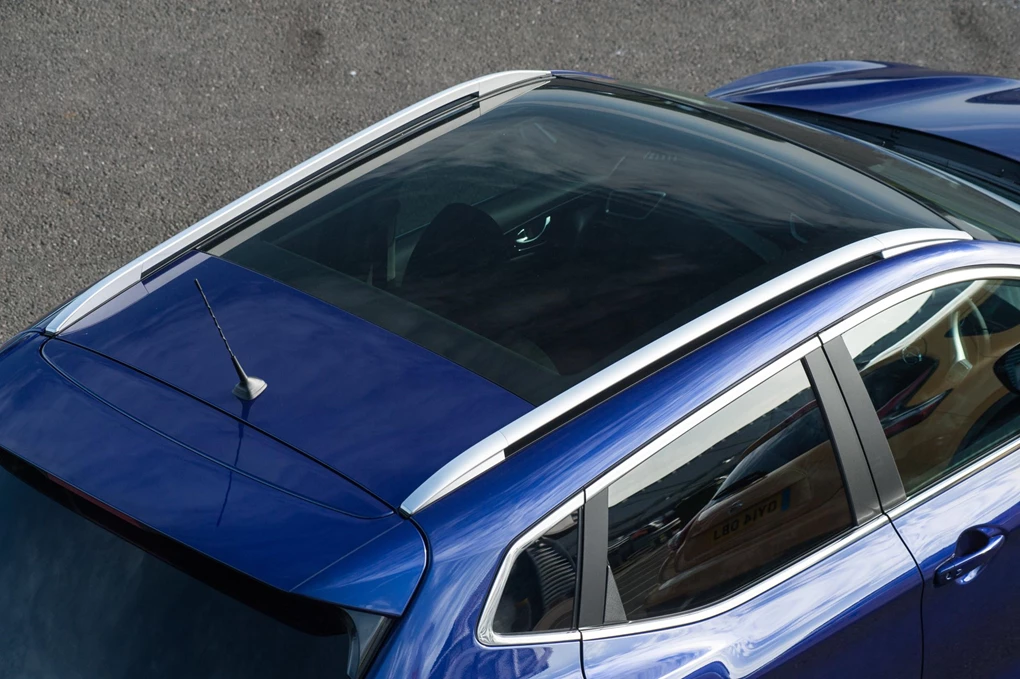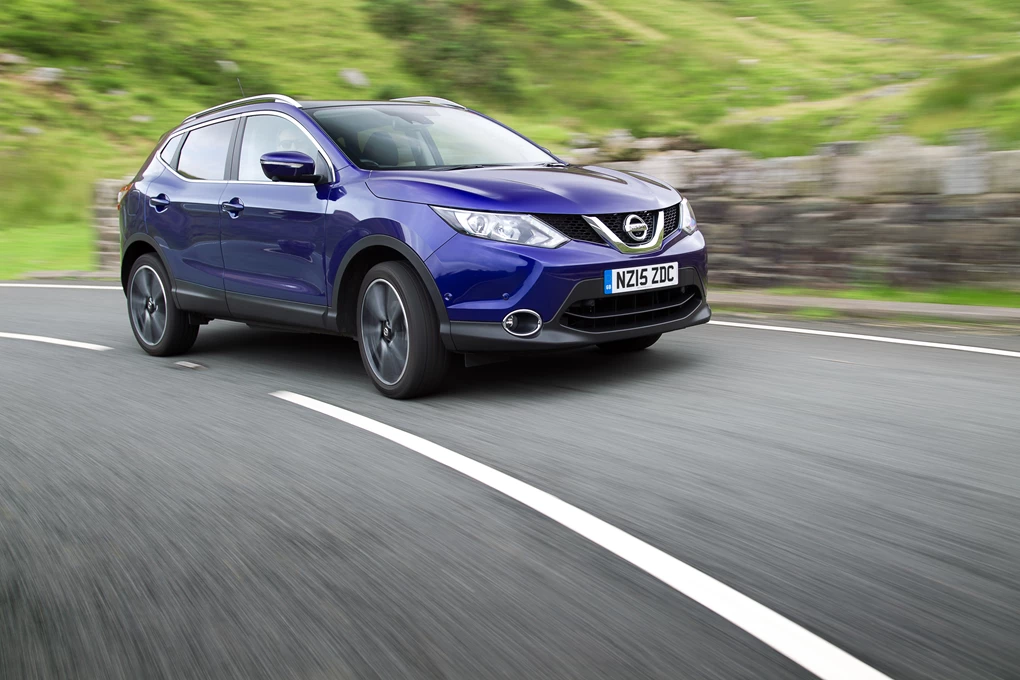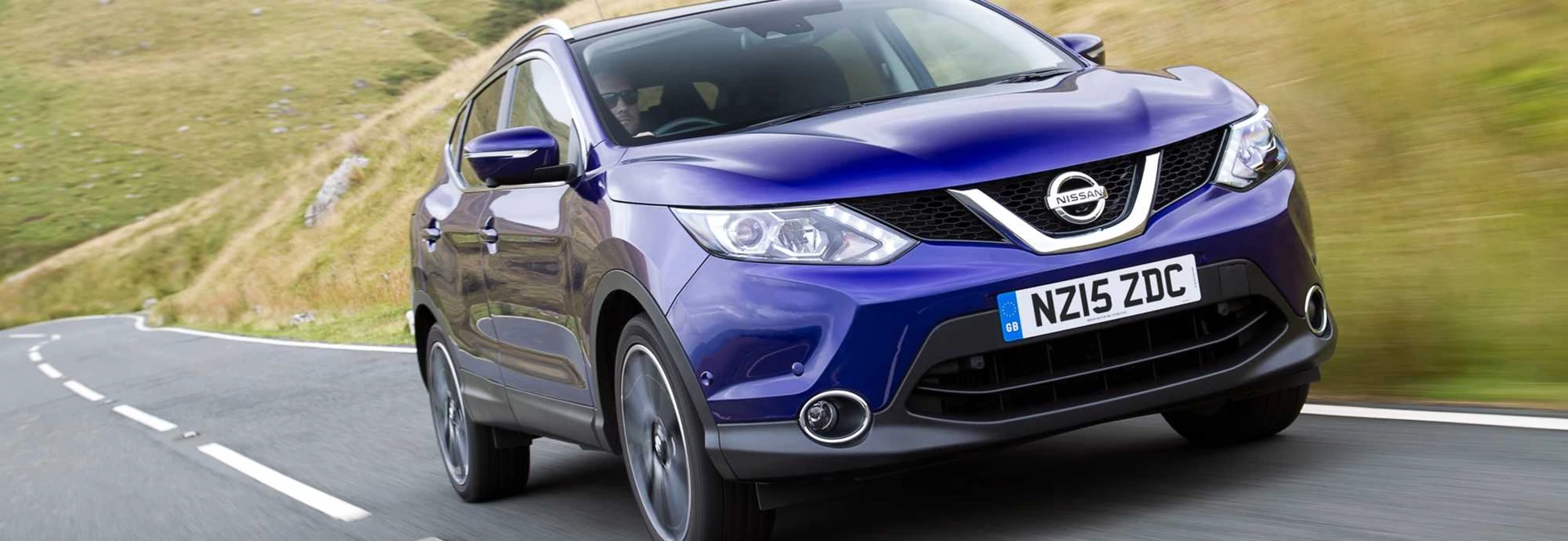Nissan hit new frontiers following the launch of the first-generation Qashqai in 2007, spawning a still-growing number of rivals, after manufacturers wised up to the crossover format’s popularity.
Having consistently held a spot in the top ten biggest sellers in the UK for much of its lifetime, the arrival of the second-gen Qashqai was much anticipated, with high hopes for an even better car than its predecessor. And, of course, it’s a particular success story for Britain: it was created at Nissan Design Europe in London and its technical centre in Cranfield, Bedfordshire, and will be built at the brand’s Sunderland plant, which also produces the Nissan Note, Juke and LEAF.
Starting from around £17k, Nissan is banking on premium tech, sharpened design and enhanced dynamics to keep the car ahead of the game.

Performance
There’s an entry-level 1.2 DIG-T petrol engine with 113bhp, hitting 62mph in 10.9 seconds. And following the trend of downsized yet more powerful engines, it has better acceleration than the outgoing 1.6-litre naturally-aspirated engine.
Meanwhile, a 1.5-litre dCi 109bhp direct-injection diesel engine with excellent economy and efficiency will be the top seller in the overall range, while a 1.6-litre diesel with 128bhp will be offered in two- or four-wheel drive. Most versions will come with a manual gearbox as standard, which admittedly feels really rather clunky and a bit cheap, though the 1.2-litre DIG-T and 1.6-litre dCi are also available with the far superior Xtronic automatic gearbox.
We tested the two diesel engines to see how they compare. First off, the predicted best-selling 1.5-litre dCi engine. This kind of engine is never going to win races, but nonetheless, this frugal number will be more than sufficient for most, holding its own at motorway speeds. It reaches 0-62mph in 11.9 seconds, but doesn’t feel too sluggish considering the figures, with a top speed of 113mph.
We also tried the 1.6-litre 128bhp diesel with Xtronic transmission, to see how the auto fared, which achieves 62mph in 11.1 seconds and a top speed of 115mph. It's a CVT (continually variable transmission), which in some models, sees the revs sit at a high rpm as you accelerate. In the Qashqai, engineers have programmed it to act more like a traditional gearbox, and it feels sportier and more refined as a result.
In terms of petrol options, the 1.2-litre DIG-T unit is perfectly suited to the car, and despite its small size packs a fairly impressive punch. There's ample torque to get this model moving, and for its all-round performance alone, this is our favourite. But, for 0-62mph acceleration in less than ten seconds, you'll need the 1.6-litre DIG-T pertrol, which gets there in 9.1 seconds and has a top speed of 124mph, thanks to its healthy 163bhp output.

Ride and Handling
The steering is reasonably well weighted, direct and quick to respond, while the car is also able to tackle corners surprisingly well for a large crossover with very little body roll.
Nissan knows full well that the sort of person who buys the Qashqai is by no means interested in limited-slip differentials, uprated coilovers or anything of that nature. As a result, the ride setup is matched perfectly to its core audience, with a comfortable demeanour. There's a plushness to the way the Qashqai tackles bumps and cracks in the road, and though with larger wheels you'll know they're there, you don't really feel them. The steering doesn't give much by way of feedback, but it is reasonably well weighted, direct and quick to respond, while the car is also able to tackle corners surprisingly well for a large crossover with very little body roll. Although the first-generation Qashqai has a bit of a reputation for being quite a noisy thing on the road, this second-gen model is impressively refined. Hushed even at motorway speeds, noise insulation to negate wind rustle and the thrum of the engine inside the cabin has been increased, making the Qashqai even more comfortable and even more appealing.

Interior and Equipment
The Nissan Qashqai is built in Sunderland, while Nissan’s European Design Centre is located in Paddington, London and its Technical Centre is found in Cranfield, Bedfordshire.
One thing that has aged dramatically in the first-generation Qashqai is the cabin, which looks dated and lacking in quality. This new model is Nissan’s opportunity to put things right, and the latest interior certainly uses drastically improved plastics and better design cues for its controls and buttons, though some more premium-looking materials might be nice in higher trim levels. Nissan has also abandoned a traditional cable-operated handbrake in favour of an electronic one, which it says frees up more space for owners’ bits and pieces, in response to customer feedback. Whether or not you're a fan will largely depend on your personal tastes, however. As a crossover, passenger and luggage space is paramount: the car is 20mm wider, 47mm longer and 15mm lower than the existing car, but despite the height reduction, front and rear headroom levels have increased by 10mm. Meanwhile, the boot is 20 litres bigger than before at 430 litres, with seats up. Maximum boot space clocks in at 1,585 litres in all, which is 50 litres more than popular rivals like the Volkswagen Golf and 114 litres more than the Ford Focus. The tailgate now opens 150mm higher for easy access and has a dual-floor system which allows two floor panels to be lifted separately for more storage underneath. Six trims are available: Visia, Acenta, Acenta Premium, n-tec, n-tec+ and Tekna. Pound-for-pound, the base Qashqai comes with a lot more standard equipment than the majority of its rivals, while all except the entry-level model get Nissan’s full suite of Safety Shield technologies which includes things like blind spot detection and a 360-degree surround-view camera and which helped the car earn the title of the safest car you can buy.
Cost
The big player here is the 1.5-litre dCi, which will be the top seller in the UK, based on its frugal running costs, including zero road tax.
The big player here is the 1.5-litre dCi, which will be the top seller in the UK, based on its frugal running costs, including zero road tax. Offering an impressive 99g/km CO2 and official combined fuel consumption figures of 74.3mpg, this quickly makes the odds stack up against the other engines and, indeed, many of its rivals. The 1.2-litre petrol has improved by 15g/km CO2 over its 1.6-litre predecessor to 129g/km, while it offers a combined fuel consumption figure of 50.4mpg. The two-wheel-drive 1.6-litre diesel emits 116g/km and 64.2mpg, while the Xtronic version emits 129g/km and returns 57.6mpg. The four-wheel drive manual version emits 133g/km and achieves an official 55.4mpg. The popularity of the Nissan Qashqai has made it a desirable car on used forecourts, which has had the effect of boosting residual values, reducing the overall cost of ownership.
Our Verdict
Nissan hasn’t strayed far from its winning formula, building on the excellence of the original Qashqai. It’s more beefy and bulbous in its looks than its predecessor, but remains a good-looking car that will sell by the bucketload, only aided further by its enhanced interior and excellent engines. The 1.5 dCi is the one to go for if you cover a higher annual mileage, offering an all-round package of acceptable performance, good ride and handling along with wallet-friendly running costs. But, the 1.2-litre petrol also makes a strong case for itself, particularly if you spend most of your time on shorter trips.





